Elegant, understated and unmistakably Italian, the Ferrari Amalfi has just broken cover as the Italian marque’s latest front-engined coupe. Positioned as Maranello’s gateway to the brand, the Amalfi picks up where the Roma left off, with sharper dynamics, more intuitive tech, and a return to tactile controls. Ferrari, of course, has a long-standing tradition of building luxurious front-engined continental Grand Tourers that favored grace and pace over aggression. Models like the timeless 250 GT Lusso and 550 Maranello, despite packing mega performance numbers, are befitting of the Rivera image, even today.
In 2019, Ferrari rekindled that tradition with the Roma. Named after the eternal city itself, its sleek lines were designed to evoke the glamor and freedom of 1950s and ’60s Italy, with what Ferrari called “La Nuova Dolce Vita”, which roughly translates in Italian to The New Sweet Life. Now with this latest GT, named after one of the most picturesque regions of the Mediterranean, off the Western coast of Italy, the Amalfi is essentially refining Ferrari’s GT formula, without trying to reinvent it. So, how does it stack up against the Ferrari Roma? Let’s find out.
Exterior Design
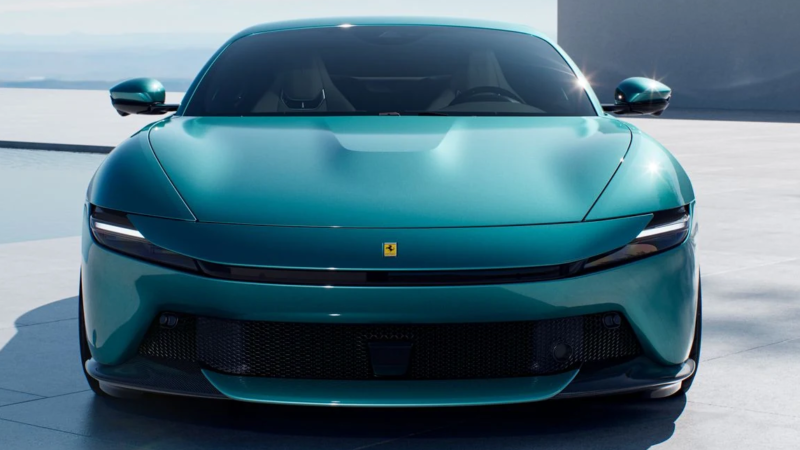
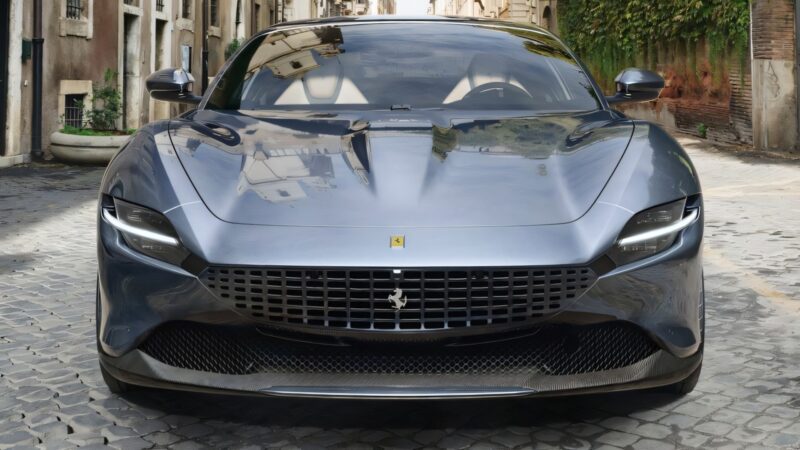
At first glance, it might appear that not much has changed, and this is especially true when both cars are viewed from the side, as both maintain more or less the same profile. But elsewhere, the changes made by Ferrari’s design team, led by Flavio Manzoni, are more deliberate and effective. Now design of course is a subjective affair, but if you were not a fan of the oversized body-colored perforated-style grille on the Roma, it has now been replaced.
The Amalfi features a cleaner facia that is reminiscent of some of Ferrari’s more recent models like the Daytona SP3 hypercar, the F80, and the Dodici Cilindri, sans the black contrasting lip. This brings it in line with the rest of the Ferrari lineup. The new front-end cleverly integrates lighting and sensors within a darkened recess, maintaining form without compromising function. Another big change upfront is that the pronounced hood bulge of the Roma has made way for a more subtle one on the Amalfi.
Down the sides, you’ll find familiar muscular haunches, but what you can’t see is that Ferrari has worked extensively on improving aerodynamic efficiency. Starting with Vortex generators upfront, the underbody too has been extensively reworked, and air is channeled more effectively, reducing drag while enhancing downforce. Even the 20-inch forged wheel has aero elements that help with cooling the brakes and ride on a choice of Bridgestone or Pirelli tires.
The rear is where the biggest change has taken place. A new active spoiler replaces the somewhat pop-up element seen on the Roma. Three positions, low, medium, and high, automatically adjust based on the speed and handling characteristics. Sleeker, more flush, and better integrated than before, it reacts to high-speed cornering and sudden weight transfer under hard braking, providing real-time downforce of up to 240 pounds at 155 mph with minimal drag penalty. With the tailgate now devoid of the license plate, slab-back design, revised diffuser, and revised taillights, the rear end appears wider and more planted than before.
Interior Design

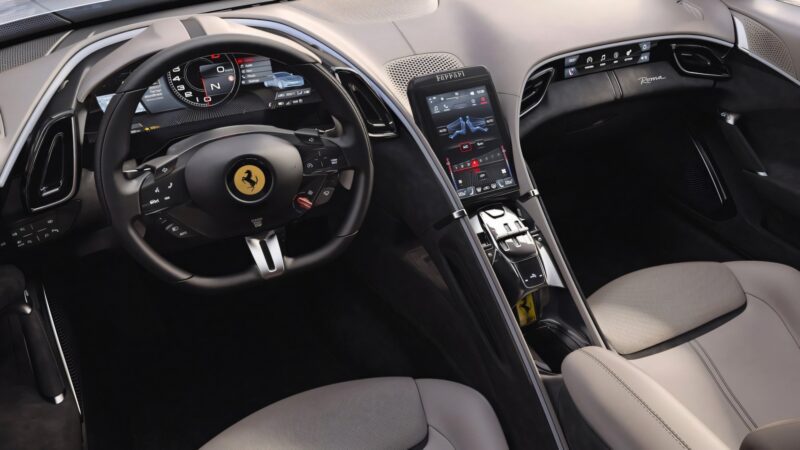
While things haven’t changed dramatically outside, the same cannot be said about the Amalfi’s cabin, which sees a radical transformation and a major departure from the outgoing Roma, for several reasons. Ferrari has listened and, upon customer feedback, has decided to do away with the haptic-feedback systems for good-old physical buttons.
Barring the Manettino dial, where many of the controls on the steering of the outgoing Roma were touch-sensitive, on the Amalfi, everything from the cruise control to phone functions now features tactile controls, with the red engine-start button now made out of anodized aluminium.
The Amalfi retains Ferrari’s twin-cockpit layout, but with three screens. The central portrait-style infotainment panel of the Roma has been replaced with a landscape 10.25-inch unit, which now complements the highly customizable 15.6-inch driver display and the 8.8-inch passenger readout. Apple CarPlay and Android Auto, and wireless charging are standard.
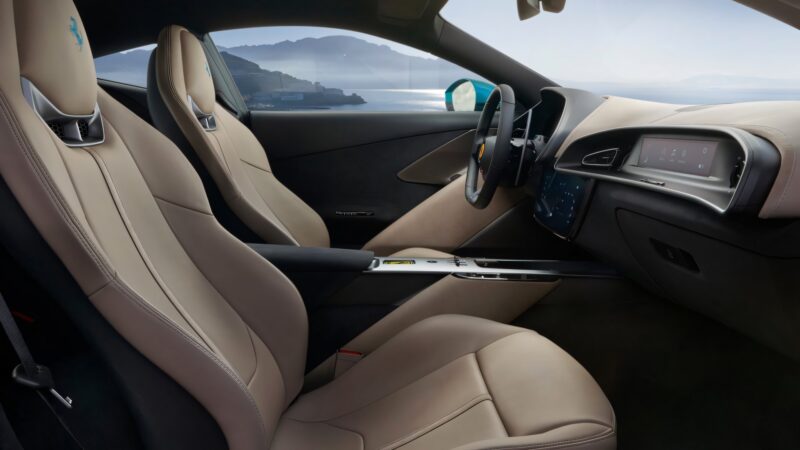
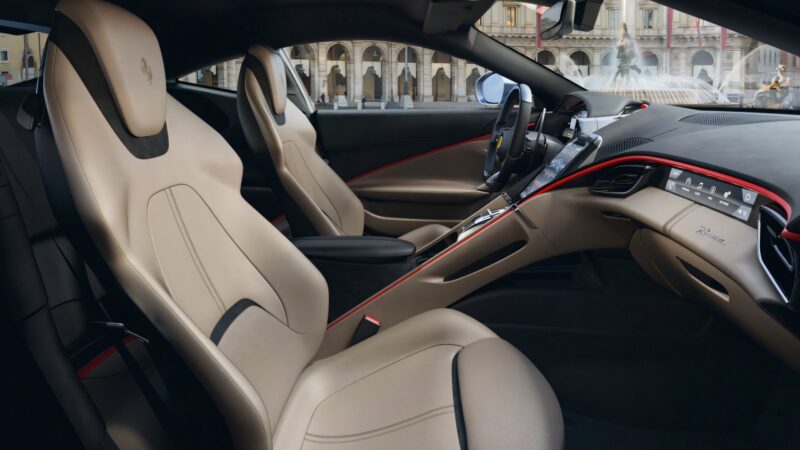
In terms of design details, the center console is milled from a single piece of aluminium and, in some specs, can also be clad in carbon fiber. Upon that center console, the transmission toggles just like on the Roma are beautifully integrated, and continue to evoke gated shifters of classic Ferraris. A new interior color palette with optional massaging seats and a 14-speaker Burmester audio system complements the sophisticated cabin.
Now, as the proportions and dimensions are more or less the same as the Roma, the Amalfi offers similar levels of practicality. Ferrari classifies it as a 2+ Berlinetta, so expect similar room on the rear seats, but the trunk with 9.64 cubic feet should be roomy enough for a set of golf clubs.
Ferrari Amalfi Performance
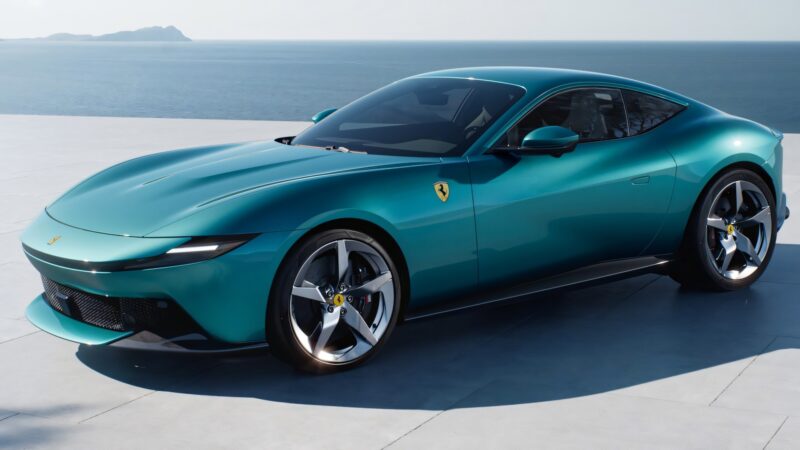
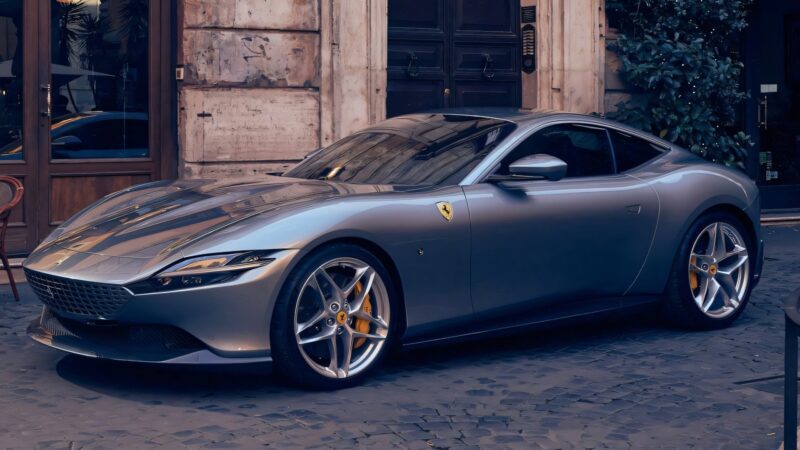
Under the skin, the Amalfi sticks with Ferrari’s proven 3.9-liter twin-turbo V8, with no hybrid assistance, no electric motors, just internal combustion done right. Ferrari engineers have now optimized the F154 engine to deliver 631 horsepower (up from 612 in the Roma) and 560 pound-feet of torque. Ferrari lists the dry weight at just 3,241 pounds. 62 mph comes up in just 3.3 seconds, and top speed is rated at 198 mph.
The unit now features lightweight camshafts that shave 2.87 pounds, and the block itself has been remachined for less mass. The turbocharger response should feel more immediate, thanks to new calibrations, higher spin thresholds, and back-specific pressure sensors. A revised oil system improves efficiency and reduces cold-start noise by 30%.
The result is a more responsive, rev-happy engine with a more usable powerband in the real world. A flat-plane crank, equal-length headers, and re-engineered exhaust system with proportional bypass valve should give the Amalfi a deeper, more evocative sound profile.
| Specification | Ferrari Amalfi | Ferrari Roma |
| Engine | 3.9L twin-turbo V8 | 3.9L twin-turbo V8 |
| Power | 631 hp | 612 hp |
| Torque | 561 lb-ft | 561 lb-ft |
| Transmission | 8-speed DCT | 8-speed DCT |
| 0–62 mph | 3.3 seconds | 3.4 seconds |
| Top Speed | 198 mph | 198 mph |
| Dry Weight | 3,240 lbs | 3,245 lbs |
Beyond the engine bay, the Amalfi’s chassis has also seen some significant improvements. With a front-mid mounted engine layout, ideal for optimal 50:50 weight distribution, the Amalfi builds on the Roma’s dynamics, but the big change is the introduction of Brake-by-wire.
Paired with Ferrari’s tried-and-tested carbon ceramics that replace the traditional hydraulic setup, it gives the car stronger, more consistent stopping power. Braking distances have now dramatically improved with 62 mph to zero in 98 feet and 124 mph to zero in under 394 feet. For context, that is over 34 feet shorter than the Roma’s.
Additionally, Side Slip Control 6.1 manages everything from torque vectoring to body control and eclectic steering calibration. Grip estimations are now 10% faster, and thanks to integration with the electric steering rack, feedback should feel sharper, cleaner, and more confidence-inspiring. The ABS Evo system, first seen in the 296 GTB, is now seen here, fine-tuned for both dry roads and mixed conditions.
2026 Ferrari Amalfi Price & Availability
Now, the Amalfi may not outgun a 296 GTB or out-cool the Daytona SP3, but what it does is something far more nuanced. It refines Ferrari’s aforementioned front-engined GT formula not with fanfare or radical reinvention, but with restraint and maturity. It’s a car that understands its purpose. Fast, yes; exotic, of course, but also livable, intuitive, and quietly elegant. In fact, it could’ve been called the Roma M and gotten away with it.
Deliveries should begin in early 2026. While U.S. pricing hasn’t been confirmed, the Amalfi starts at €240,000 in Italy, or roughly $280,000. Factor in options like carbon trim, special paint, and the optional Burmester audio system, and you could easily be looking at a $300,000+ grand tourer.
Source: Ferrari

